
This article is about the demographic features of the population of Italy, including population density, ethnicity, education level, health of the populace, economic status, religious affiliations and other aspects of the population.
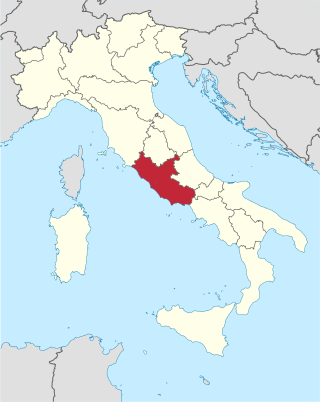
Lazio or Latium is one of the 20 administrative regions of Italy. Situated in the central peninsular section of the country, it has 5,714,882 inhabitants and a GDP of more than €197 billion per year, making it the country's second most populated region and second largest regional economy after Lombardy. The capital of Lazio is Rome, which is also the capital and largest city of Italy.
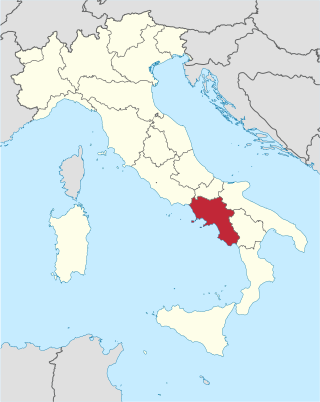
Campania is an administrative region of Italy; most of it is in the south-western portion of the Italian peninsula, but it also includes the small Phlegraean Islands and the island of Capri. The capital of the Campania region is Naples. As of 2018, the region had a population of around 5,820,000 people, making it Italy's third most populous region, and, with an area of 13,590 km2 (5,247 sq mi), its most densely populated region. Based on its GDP, Campania is also the most economically productive region in southern Italy and the 7th most productive in the whole country. Naples' urban area, which is in Campania, is the eighth most populous in the European Union. The region is home to 10 of the 58 UNESCO sites in Italy, including Pompeii and Herculaneum, the Royal Palace of Caserta, the Amalfi Coast and the Historic Centre of Naples. In addition, Campania's Mount Vesuvius is part of the UNESCO World Network of Biosphere Reserves.

The regions of Italy are the first-level administrative divisions of the Italian Republic, constituting its second NUTS administrative level. There are twenty regions, five of which have higher autonomy than the rest. Under the Constitution of Italy, each region is an autonomous entity with defined powers. With the exception of the Aosta Valley and Friuli Venezia Giulia, each region is divided into a number of provinces.
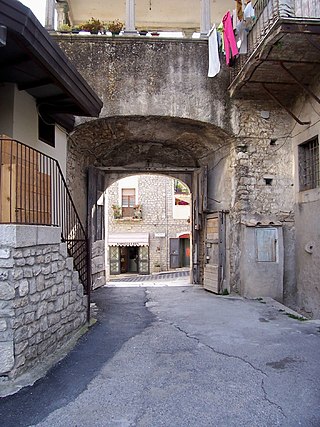
Pietrelcina is a town and comune in the province of Benevento in the Campania region of southern Italy. It is the birthplace of Saint Pio of Pietrelcina, better known as Padre Pio.

Greci is an Arbëreshë town and comune in the province of Avellino, Campania, Italy, located about 100 km northeast of Naples and about 50 km southwest of Foggia. It is a mountain agricultural village lying astride the Apennines and represents the only existing linguistic minority in Campania; Arbereshe people have settled in Greci since the 15th century.
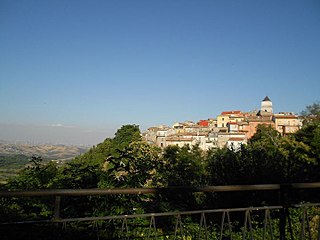
Guardia Lombardi, known as La Uàrdia in the Irpinian dialect, is a small town and comune in the Province of Avellino in Campania, Italy. At an elevation of 998 metres (3,274 ft), it is located in Irpinia in the Apennine Mountains of Southern Italy. It has experienced a number of major earthquakes throughout its history that have devastated the town, and is considered within zone 1 of the Protezione Civile's seismic classification index, indicating very high seismicity.

Trevico is a town and comune in the province of Avellino, Campania, southern Italy.

Villanova del Battista is a town and comune in the province of Avellino, Campania, southern Italy.

Romanians in Italy became a significant population after 1999, due to a large wave of emigration known in Romania as Fenomenul migrației către UE. A large part of Romanian emigrants went to Spain or Italy, whose national languages are Romance languages like Romanian. They were followed by another wave beginning in 2002, when Romanian citizens obtained the right to move to any Schengen Zone country without a visa. In 2007 Romania joined the European Union, further increasing the economic and political ties between the countries.
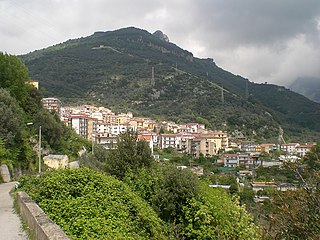
Olevano sul Tusciano is a town and comune in the province of Salerno in the Campania region of south-western Italy.
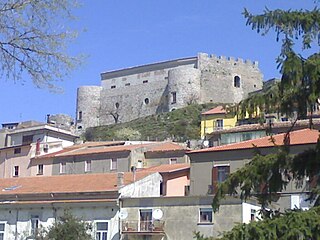
Postiglione is a town and comune in the province of Salerno in the Campania region of south-western Italy.
San Gregorio Magno is a town and comune in the province of Salerno in the Campania region of southern Italy.

Sessa Cilento is a town and comune in the province of Salerno in the Campania region of south-western Italy.

Alano di Piave is a comune (municipality) in the province of Belluno in the Italian region of Veneto, located about 60 kilometres (37 mi) northwest of Venice and about 35 kilometres (22 mi) southwest of Belluno. As of 31 December 2021, it had a population of 2,665 and an area of 36.4 square kilometres (14.1 sq mi).
Cautano is a comune (municipality) constituted from two countries, Cautano and Cacciano, in the Province of Benevento in the Italian region Campania, located about 75 km northeast of Naples and about 13 km west of Benevento and about 13 km north of Montesarchio..

Cerreto Sannita is a comune (municipality) in the Province of Benevento in the Italian region Campania, located about 60 km northeast of Naples and about 25 km northwest of Benevento.
Pannarano is a comune (municipality) in the Province of Benevento in the Italian region Campania, located about 45 kilometres (28 mi) northeast of Naples and about 15 kilometres (9.3 mi) southwest of Benevento. As of 1 January 2020, it had a population of 2,077 and an area of 11.73 square kilometres (4.53 sq mi).

In 2021, Istat estimated that 5,171,894 foreign citizens lived in Italy, representing about 8.7% of the total population. These figures do not include naturalized foreign-born residents as well as illegal immigrants, the so-called clandestini, whose numbers, difficult to determine, are thought to be at least 670,000.
















